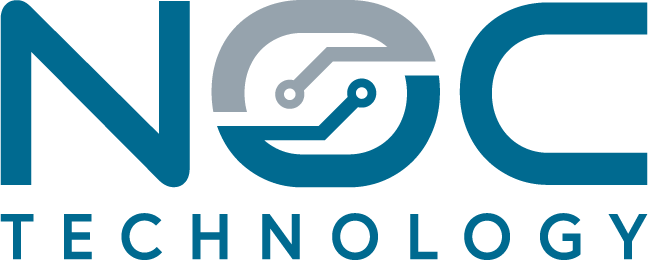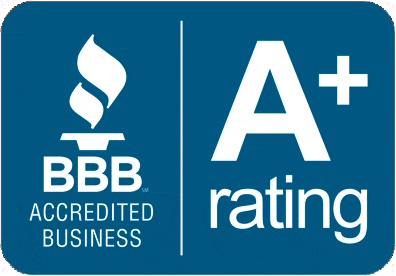Complete IT Checklist for Merging Two St. Louis Dental Practices
by Jon Lober | NOC Technology
What's the Complete IT Checklist When Two St. Louis Dental Practices Merge Into One Multi-Location Practice?
Merging two dental practices requires a 6-12 month phased IT integration costing $15,000-$35,000, with critical decisions on unified versus separate infrastructure affecting operational efficiency by 30-40%. The most complex challenge involves consolidating different practice management systems while maintaining HIPAA compliance and zero patient appointment disruption during the transition.
How do you consolidate two different practice management systems without losing patient history?
The safest approach involves running parallel systems for 90-120 days while gradually migrating data in phases rather than attempting a single cutover. When Practice A runs Dentrix and Practice B uses Eaglesoft, you're looking at a complex data mapping project that typically takes 3-4 months to execute properly.
Start by exporting complete patient records from both systems into CSV format, including appointment history, treatment plans, insurance information, and imaging metadata. Create a unified patient identifier system that prevents duplicate records - practices often discover 5-12% of patient records have been duplicated before and as many as 30% following a merger. Map data fields between systems using a conversion tool or middleware platform, which costs $3,000-$8,000 depending on record volume.
| Phase | Duration | Key Activities | Cost Range |
|---|---|---|---|
| Assessment | 2 weeks | System audit, data volume analysis | $1,500-$2,500 |
| Data Mapping | 3-4 weeks | Field matching, custom script development | $3,000-$5,000 |
| Test Migration | 2 weeks | Sample data transfer, validation | $2,000-$3,000 |
| Full Migration | 4-6 weeks | Phased data transfer, parallel running | $4,000-$8,000 |
| Validation | 2-3 weeks | Accuracy checks, staff training | $1,500-$2,500 |
Schedule the final cutover during a long weekend or holiday period. Export all historical x-rays and intraoral images to a neutral DICOM format before importing to the unified system. Most practices underestimate storage requirements - plan for 2-3TB of imaging data per location, with cloud backup adding another $200-$400 monthly.
What's the right way to merge patient databases while maintaining HIPAA compliance?
Execute a formal Business Associate Agreement (BAA) with any third-party data migration vendor and maintain detailed audit logs showing every record accessed, modified, or transferred during the merger. HIPAA violations during practice mergers can trigger fines ranging from $100 to $50,000 per record, with St. Louis practices facing increased scrutiny following Missouri's strengthened data protection regulations.
Read More: Navigating Missouri and Federal Cybersecurity Regulations
Create a dedicated migration environment isolated from production systems. Use encrypted connections (minimum AES-256) for all data transfers between locations. Document your data handling procedures in a formal merger IT security plan that addresses:
- Patient notification requirements (Missouri law requires notification within 60 days if records are transferred to new ownership)
- Access control changes - revoke permissions for departing staff within 24 hours
- Encryption of data at rest and in transit
- Backup verification before any system modifications
- Audit trail preservation for 6 years per HIPAA requirements
Implement a patient matching algorithm that identifies potential duplicates using multiple criteria: name variations, birth dates, SSN last four digits, and insurance IDs. Manual review catches the 8-10% of matches that automated systems miss. Assign a dedicated compliance officer to oversee the merger - typically a 40-60 hour commitment over the project timeline.
Most critical: maintain separate encrypted backups of both original databases for at least 12 months post-merger. This protects against data corruption and provides evidence of proper handling if questioned by regulators or during insurance audits.
Should you keep separate networks or integrate everything into one cloud system?
Unified cloud infrastructure reduces IT costs by 25-35% annually while improving inter-office collaboration, making it the better choice for practices planning long-term growth. The decision typically comes down to three factors: internet reliability at both locations, current infrastructure age, and plans for additional acquisitions within 24 months.
| Factor | Separate Networks | Unified Cloud | Hybrid Approach |
|---|---|---|---|
| Initial Setup Cost | $8,000-$12,000 | $15,000-$25,000 | $12,000-$18,000 |
| Monthly Operating | $800-$1,200 | $600-$900 | $700-$1,000 |
| Failover Time | 4-8 hours | 5-15 minutes | 30-60 minutes |
| Staff Training | Minimal | 16-24 hours | 8-12 hours |
| Scalability | Limited | Unlimited | Moderate |
| HIPAA Compliance | Complex | Simplified | Moderate |
For St. Louis dental practices, unified cloud systems work best when both locations have fiber internet (minimum 100/100 Mbps) with separate ISPs for redundancy. Local providers like AT&T Fiber and Spectrum Enterprise offer dedicated circuits starting at $500-$800 monthly per location. Add SD-WAN technology ($200-$400/month per site) to automatically failover between connections.
Cloud migration typically includes moving to Microsoft 365 or Google Workspace ($15-$25 per user/month), cloud-based practice management ($300-$500/month per location), and unified backup systems ($400-$600/month for both sites). The hidden benefit: remote access for doctors reviewing cases from home, worth 5-8 hours of productivity weekly.
Keep servers on-premise only if you have specialized equipment (like CAD/CAM systems or cone beam CT) requiring local processing. Even then, a hybrid approach syncs critical data to the cloud while maintaining local performance for imaging workstations.
How do you handle phone systems and scheduling across two merged locations?
Implement a unified VoIP system with intelligent call routing that presents one phone number to patients while automatically directing calls to the appropriate location based on patient history or appointment type. Modern unified communications platforms handle this seamlessly, reducing missed appointments by 15-20% and improving front desk efficiency by 30% Read More: Communicate at the speed of technology.
The transition requires porting existing numbers to a cloud PBX provider - a process taking 10-15 business days per number. Configure hunt groups so calls ring at both locations simultaneously during peak times, with overflow routing to available staff. Advanced features worth implementing include:
- Appointment confirmation via SMS (reduces no-shows by 25-30%)
- Call recording for training and compliance ($50-$100/month additional)
- Virtual receptionist for after-hours scheduling
- Direct extensions for specialists and hygienists
- Mobile app integration for on-call emergency responses
Budget $3,000-$5,000 for new IP phones if current equipment isn't compatible, plus $150-$250 monthly per location for hosted VoIP service with 8-12 concurrent call paths. Installation and training typically require 2-3 days per location, scheduled outside patient hours.
Scheduling integration proves most complex - both practices need visibility into each location's appointment book while maintaining provider preferences. Cloud-based scheduling platforms like Dentrix Ascend or Curve Hero support multi-location practices with unified patient records. Expect 20-30 hours of configuration to establish proper security permissions, provider schedules, and operatory management across sites.
Critical detail: maintain local phone number portability for 6 months minimum. Some insurance companies and elderly patients continue using old numbers despite notifications. Forward legacy numbers to the unified system with customized greetings identifying the practice merger.
What's the real timeline and cost for technology integration during a dental practice merger?
Expect a 6-12 month complete integration timeline with total technology costs between $15,000-$35,000, not including monthly operational expenses or potential hardware upgrades. The wide range reflects variables like existing system compatibility, data volume, and whether you're maintaining grandfathered software licenses versus moving to modern cloud platforms.
| Category | Low End | High End | Timeline |
|---|---|---|---|
| Initial Assessment/Planning | $1,500 | $3,500 | Weeks 1-2 |
| Network Infrastructure | $3,000 | $8,000 | Weeks 3-6 |
| Practice Management Migration | $4,000 | $10,000 | Weeks 4-16 |
| Phone System Integration | $2,500 | $5,000 | Weeks 8-12 |
| Security/Compliance Audit | $2,000 | $4,000 | Weeks 12-14 |
| Staff Training | $1,500 | $3,500 | Weeks 14-20 |
| Contingency (15-20%) | $2,500 | $5,000 | As needed |
Month 1-2 focuses on assessment and planning. Audit both IT environments, document all software licenses, map network topology, and identify integration challenges. This phase uncovers hidden costs like expiring equipment leases or software contracts with merger penalties.
Month 3-4 involves infrastructure preparation. Upgrade internet bandwidth, implement secure site-to-site VPNs, standardize workstations, and establish unified backup systems. This phase often reveals outdated equipment - budget $800-$1,500 per workstation if replacements are needed.
Month 5-8 covers the heavy lifting: data migration, system integration, and phone system cutover. Run parallel systems during this period, gradually transitioning staff to unified platforms. Expect 20-30% productivity loss during the learning curve.
Month 9-12 handles optimization and training. Fine-tune workflows, address integration issues, complete compliance audits, and document all new procedures. Missouri businesses face increasing scrutiny on data protection, making this documentation crucial for future audits.
Hidden costs to consider: temporary IT support during transition ($150-$200/hour, typically 40-60 hours total), data storage expansion ($200-$400/month ongoing), and potential software license true-ups when vendors discover the merger (10-25% increase in annual costs).
What are the most critical decision points that determine merger success?
The three make-or-break decisions are choosing between maintaining versus replacing the practice management system (Week 2-3), selecting unified versus federated IT architecture (Week 4-5), and determining the data migration strategy (Week 6-8). Each decision cascades into dozens of smaller choices that affect operations for years post-merger.
Practice management system selection drives everything else. If one practice has 10+ years of data in Eaglesoft while the other runs Open Dental, the migration complexity differs vastly from two Dentrix users combining. Consider these decision criteria:
- Data volume differential: If one practice has 3x more records, lean toward their system
- Specialty module requirements: Endodontic or orthodontic practices need specific features
- Integration ecosystem: Which system connects to your imaging, patient communication, and insurance verification tools?
- Staff expertise: Retraining 15 staff members costs $8,000-$12,000 in lost productivity
- Vendor support quality: Some vendors charge $5,000-$10,000 for merger assistance
Architecture decisions affect long-term scalability. Unified cloud infrastructure supports future growth but requires reliable internet and staff comfortable with cloud technologies. Federated systems maintain independence but complicate reporting and increase IT overhead by 40-50%.
Data migration strategy determines disruption level. "Big bang" migrations complete over a weekend but risk total failure. Phased approaches take 3-4 months but allow issue resolution without stopping operations. Most successful mergers use hybrid strategies: migrate historical data slowly, then cut over active patients during a planned closure.
| Risk Factor | Probability | Impact | Mitigation Strategy |
|---|---|---|---|
| Data loss during migration | Low | Severe | Triple backup strategy, test migrations |
| Extended downtime | Medium | High | Parallel systems, weekend work |
| Staff resistance | High | Medium | Early involvement, champion program |
| Vendor lock-in | Medium | Medium | Negotiate merger clauses upfront |
| Compliance violations | Low | Severe | Continuous audit, documentation |
| Budget overrun | High | Medium | 20% contingency, phased approach |
Final consideration: bring in local IT expertise familiar with dental practice operations. St. Louis has several MSPs specializing in healthcare IT, with response times under 15 seconds for critical issues. Their experience with similar mergers prevents common pitfalls and accelerates implementation by 30-40%.
Read More: IT Support in St. Louis
Next Steps
Start your merger IT planning 6 months before the planned consolidation date. Request IT audits from both practices, including hardware inventories, software license documentation, network diagrams, and data volume reports. Schedule vendor meetings to understand merger support options and associated costs. Create a detailed project timeline with bi-weekly milestones and assign a dedicated project manager - whether internal or contracted.
Most importantly, establish your non-negotiables early: zero patient care disruption, complete HIPAA compliance throughout the process, and maintaining both locations' phone numbers for at least 6 months post-merger. These guardrails keep the project focused when facing the inevitable technical challenges and vendor complications.
About NOC Technology: NOC Technology provides managed IT services and support to healthcare practices across greater St. Louis, specializing in compliance-focused technology solutions with guaranteed sub-15-second response times for critical support needs.




